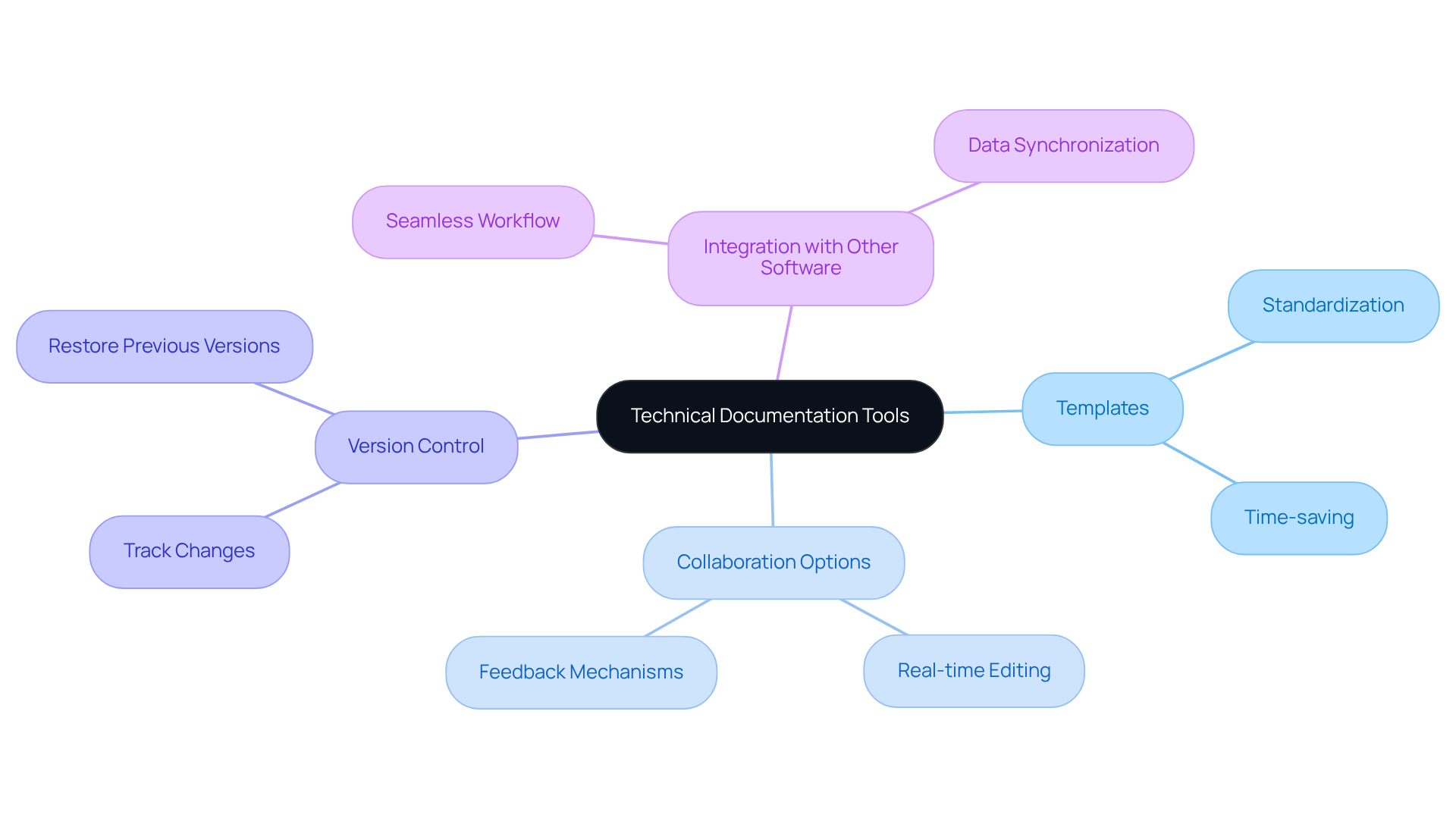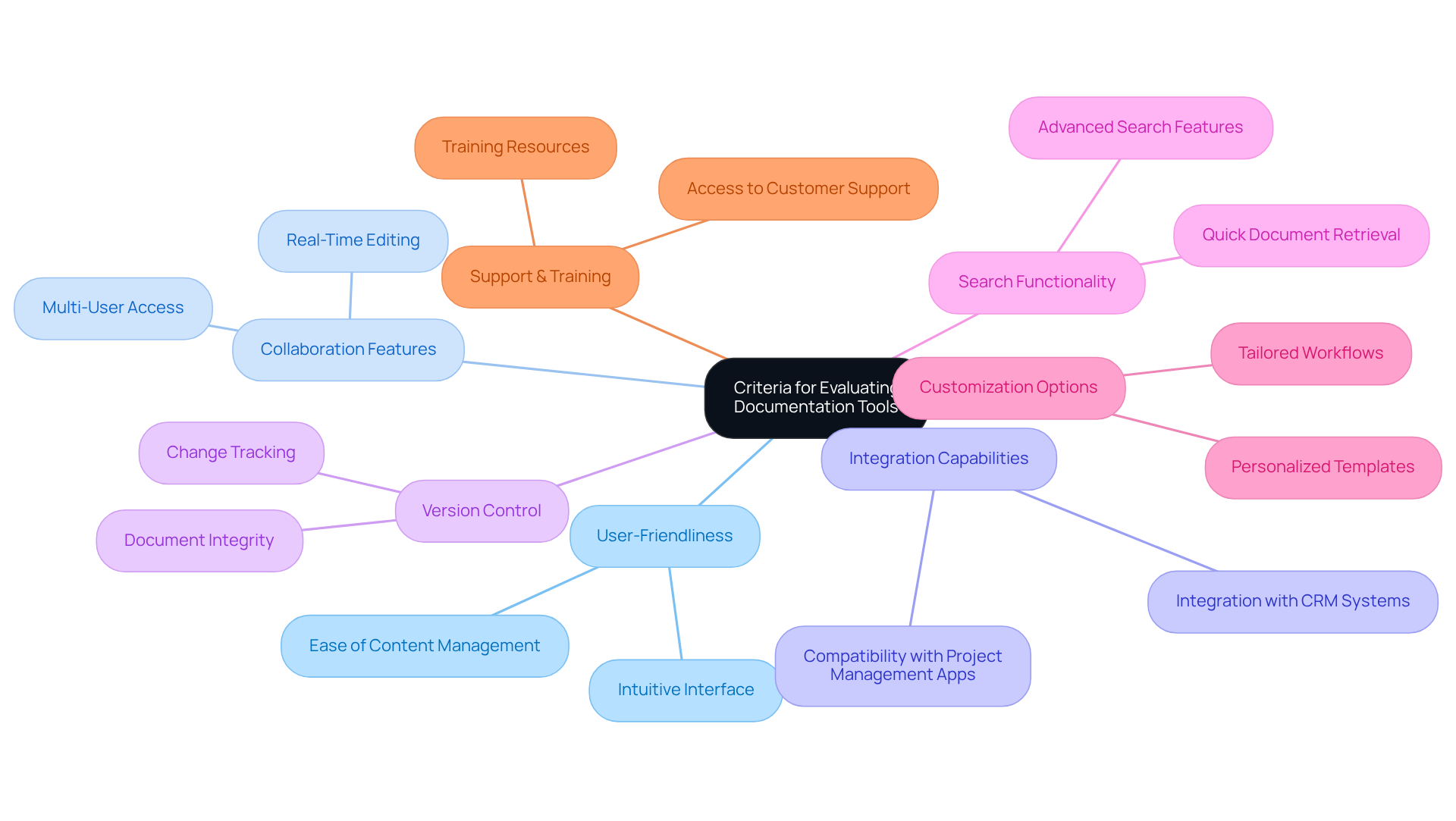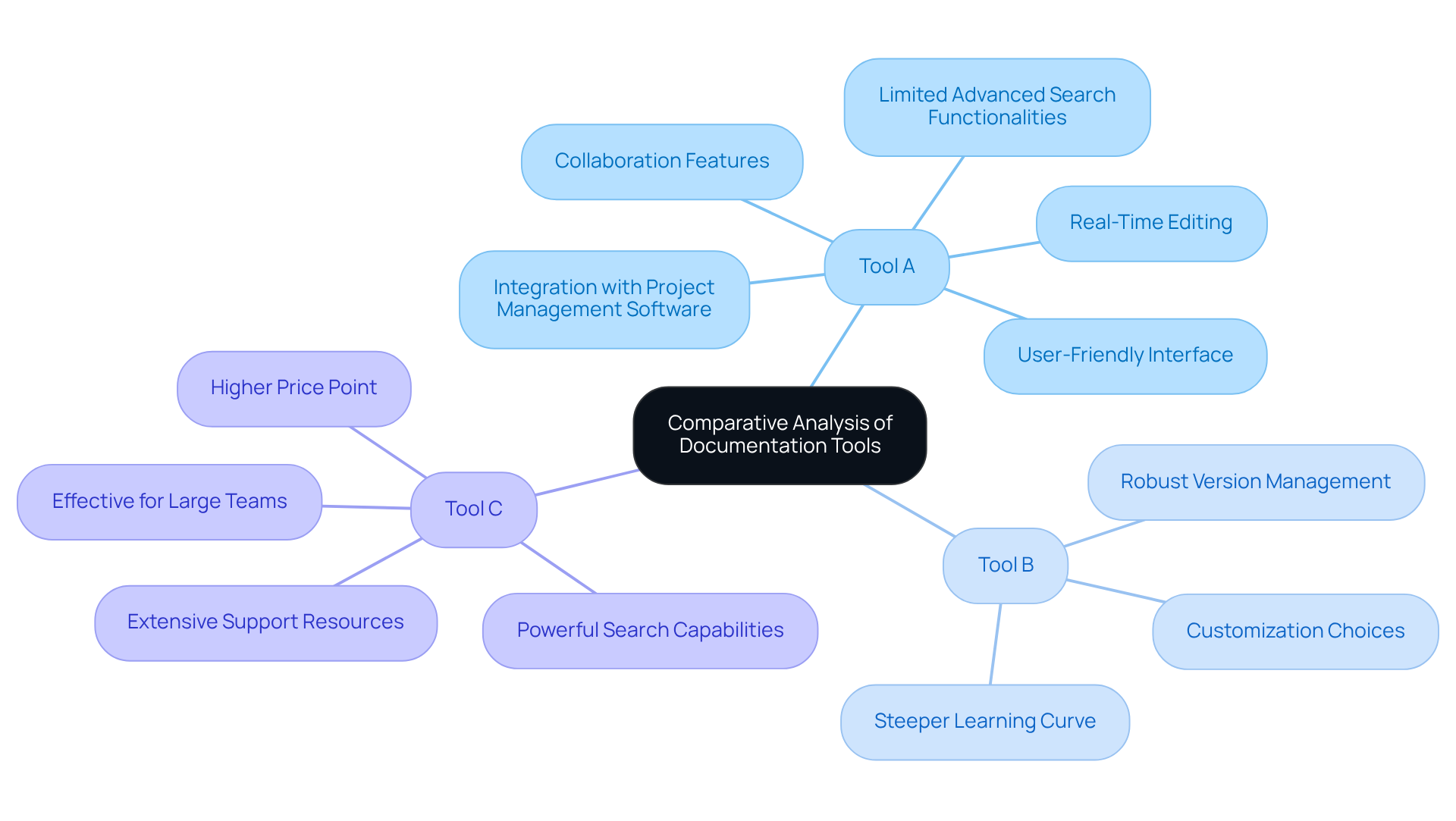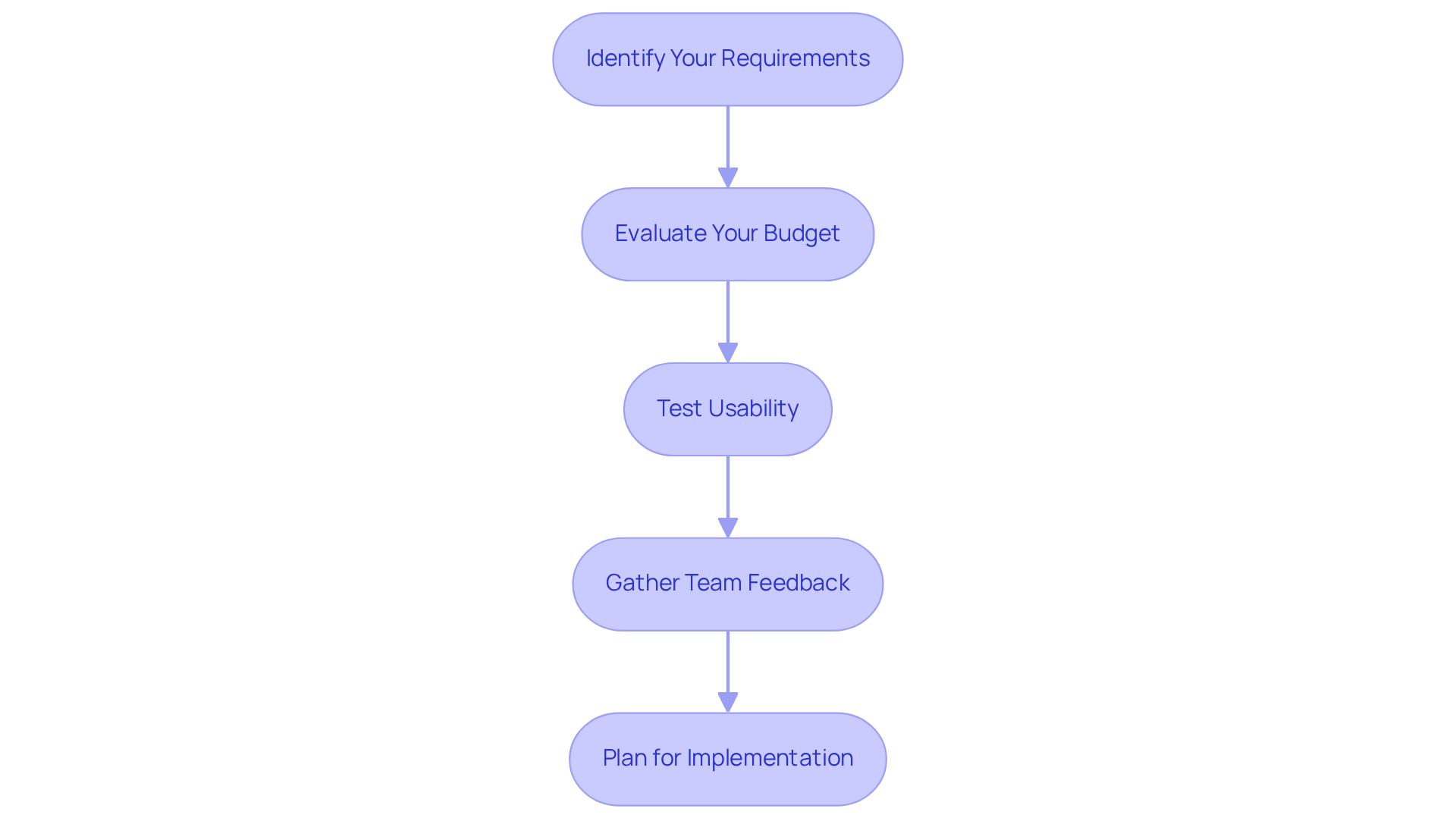
Maintaining Up-to-Date Documentation
|
October 17, 2025
|
4 Key Technical Documentation Tools for Effective Operations
Overview
You might be wondering how to boost your team's operational efficiency with the right tools. Well, the article identifies four key technical documentation tools that can really help with that. These tools come packed with features like collaboration, version control, and integration capabilities. But here's the catch: choosing the right tool isn't just about picking the fanciest option. It’s all about:
- Understanding your organization's specific needs
- Evaluating usability and budget
- Considering team feedback
After all, effective documentation practices are a team effort!
Key Highlights:
- Technical documentation tools help create, manage, and maintain documentation efficiently.
- Key features of these tools include templates, collaboration options, version control, and integration with other software.
- User-friendliness is crucial for effective documentation tools, allowing easy content creation and management.
- Collaboration features enable multiple users to work simultaneously, enhancing teamwork.
- Integration capabilities with other software systems are vital for seamless workflows.
- Version control helps track changes and maintain document integrity over time.
- Advanced search functionality improves efficiency by enabling quick access to specific documents.
- Customization options allow organisations to tailor tools to their unique needs.
- Access to customer support and training resources is essential for maximising tool effectiveness.
- Tool A is user-friendly with strong collaboration features but lacks advanced search; Tool B offers robust version management but has a steeper learning curve; Tool C excels in search capabilities but may be pricier.
- Choosing the right documentation tool involves identifying requirements, evaluating budget, testing usability, gathering team feedback, and planning for implementation.
Introduction
You might be wondering how technical documentation tools can really make a difference in your organization. Well, they serve as the backbone of efficient operations, helping you create, manage, and maintain vital documentation with ease. Not only do these tools streamline workflows and enhance collaboration, but they also cut down on the chaos that comes from mismanaged information.
With so many options out there, how do you find the right fit for your needs? In this article, we’ll dive into the key features and criteria for evaluating the top documentation tools, giving you insights that could transform your operational efficiency and decision-making processes.
Understanding Technical Documentation Tools
You might be wondering what technical documentation tools are all about. Well, these handy technical documentation tools are designed to help you easily create, manage, and maintain documentation. They make it simpler to record workflows, procedures, and policies, so you always have the right information at your fingertips and it stays up-to-date.
These technical documentation tools often include features like:
- Templates
- Collaboration options
- Version control
- The ability to integrate with other software systems
Understanding how these applications work is crucial for anyone looking to boost their operational efficiency and knowledge management strategies. Plus, having efficient resources for recording not only saves you time but also cuts down on the chaos that comes with mismanaged information. This leads to smoother operations and a nice boost in productivity. So, why not explore how these tools can make your life easier?

Criteria for Evaluating Documentation Tools
When you're on the hunt for the right technical documentation tools, there are a few key things you might want to keep in mind. First up is user-friendliness—nobody wants to wrestle with complicated software! Look for something with an intuitive interface that lets you create and manage content without needing a PhD in tech.
Next, let’s chat about collaboration features. You know how important it is for teams to work together, right? Efficient technical documentation tools enable multiple users to dive in at the same time, which not only boosts teamwork but also ensures that your records are as thorough as possible.
Then there's integration capabilities. Think about it: you want your technical documentation tools to play nice with other software systems, whether it’s project management apps or CRM systems. This connection is crucial for keeping your workflows smooth and seamless.
Don’t forget about version control! A solid version control system is like having a safety net—it helps you track changes and ensures that your technical documentation tools remain intact over time.
What about search functionality? Advanced search features in technical documentation tools can be a game-changer, enabling you to quickly find those specific documents or bits of information you need, which can significantly enhance your efficiency.
Customization options are also a big feature of technical documentation tools. You’ll want to personalize templates and workflows to fit your organization’s unique needs. After all, one size doesn’t fit all!
Lastly, let’s talk support and training. Access to customer support and training resources is essential if you want to make the most out of your system. So, what do you think? Ready to explore these features and find the perfect documentation tool for you?

Comparative Analysis of Leading Documentation Tools
In this comparative analysis, let’s take a closer look at three leading technical documentation tools: Tool A, Tool B, and Tool C. You might be wondering what sets them apart, so let’s dive in!
- Tool A: Known for its user-friendly interface and strong collaboration features, Tool A really shines when it comes to real-time editing and integration with popular project management software. However, it might fall short if you’re looking for advanced search functionalities.
- Resource B: This option offers robust version management and customization choices, making it a great fit for companies with complex record-keeping needs. Just keep in mind, it does come with a steeper learning curve for new users.
- Tool C: Tool C stands out with its powerful search capabilities and extensive support resources. While it’s highly effective for large teams, it might be pricier than some of the other options out there.
So, what’s the takeaway here? Each of these tools has its unique strengths and weaknesses. It’s super important for companies to assess their specific needs when choosing a record-keeping solution. What are you looking for in a technical documentation tool?

Choosing the Right Documentation Tool for Your Needs
Choosing the right documentation resource can feel a bit overwhelming, right? But don’t worry, it’s all about figuring out what your organization truly needs. Let’s break it down into some simple steps:
- Identify Your Requirements: What features are most important for your team? Think about things like collaboration, customization, or integration.
- Evaluate Your Budget: Take a moment to consider the cost of each option and how it fits within your budget. It’s all about finding that sweet spot!
- Test Usability: Why not take advantage of free trials or demos? This way, you can really get a feel for how user-friendly each resource is.
- Gather Team Feedback: Involve your team in the decision-making process. After all, you want to ensure the chosen resource meets their needs, too!
- Plan for Implementation: Think about how this tool will fit into your existing processes and what kind of training might be necessary.
By following these steps, you can make informed decisions that not only enhance your documentation practices but also boost your overall operational efficiency. So, what do you think? Ready to dive in?

Conclusion
Choosing the right technical documentation tools is super important for boosting your operational efficiency and making knowledge management a breeze. These tools don’t just make it easier to create and keep documentation up-to-date; they also ensure that crucial information is always at your fingertips. By getting to know the features and benefits of different documentation tools, you can make smart choices that really fit your organization’s needs.
You might be wondering what to look for, right? The article highlights some key points:
- user-friendliness
- collaboration features
- integration with your current systems
- solid version control
Each tool—Tool A, Tool B, and Tool C—brings something special to the table, from real-time editing to powerful search capabilities. This means you can carefully weigh your options and pick the perfect tool for your operations.
So, let’s wrap this up! The importance of effective technical documentation tools is huge. They’re vital for helping teams work together smoothly and keep accurate records. By following the steps for evaluation and selection we talked about, you can equip your teams with the right tools to boost productivity and achieve operational success. Now’s the perfect time to explore your options and invest in the tools that will elevate your documentation practices!
Frequently Asked Questions
What are technical documentation tools?
Technical documentation tools are applications designed to help create, manage, and maintain documentation, making it easier to record workflows, procedures, and policies.
What features do technical documentation tools typically include?
They often include features such as templates, collaboration options, version control, and the ability to integrate with other software systems.
Why is it important to understand how technical documentation tools work?
Understanding how these tools work is crucial for boosting operational efficiency and knowledge management strategies, which can save time and reduce chaos from mismanaged information.
How do technical documentation tools impact productivity?
By providing efficient resources for recording information, these tools lead to smoother operations and a boost in productivity.
👍
What others are liking
5 Steps to outline your ideal documentation structure
5 MINS READ
Where to start the your journey of mapping out your ideal documentation structure, aligning it with the very heartbeat of your organization?
Defining a winning level of detail in your process
3 MINS READ
What is too much detail, and what is too little? This article described in that winning level detail about what detail is enough.





